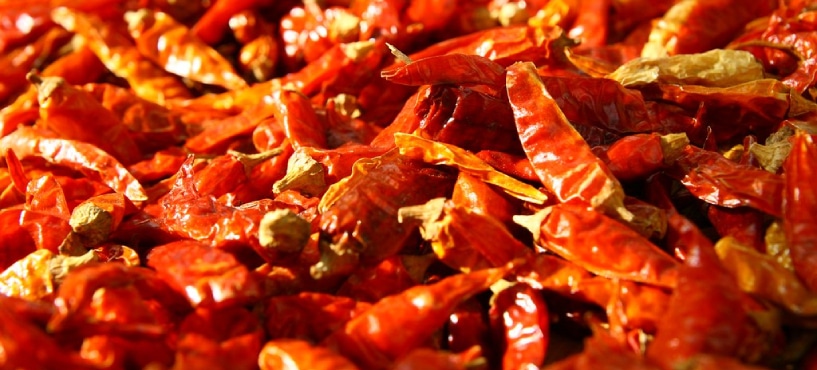Bali, renowned for its lush landscapes, rich cultural traditions, and vibrant tourism industry, is also home to a thriving chili culture. The island’s fertile soil and tropical climate create ideal conditions for cultivating a wide variety of chilies, which play a significant role in Balinese cuisine and culture. This article delves into the chili culture in Bali, exploring its history, cultivation, varieties, and culinary significance.
Introduction to Chili in Bali
Chilies are an integral part of Balinese cuisine, adding heat and depth of flavor to a myriad of dishes. The island’s chili culture is not only about the cultivation and consumption of chilies but also about the social and cultural practices surrounding them. From local markets to home gardens, chilies are ubiquitous in Bali, reflecting the island’s agricultural richness and culinary creativity.
History of Chili in Bali
The introduction of chili to Bali can be traced back to the Columbian Exchange in the 15th and 16th centuries, when European explorers brought chili peppers from the Americas to Asia. Over time, chilies became deeply embedded in Indonesian cuisine, including that of Bali. The island’s fertile volcanic soil and favorable climate allowed for the successful cultivation of various chili varieties, which have since become staples in Balinese cooking.
Chili Cultivation in Bali
Bali’s diverse climate zones, from coastal areas to mountainous regions, provide suitable conditions for growing different types of chilies. Smallholder farmers, as well as larger agricultural enterprises, cultivate chilies across the island. The cultivation practices range from traditional methods passed down through generations to modern, sustainable farming techniques.
Key Chili Growing Regions
- Tabanan: Known as the “rice bowl of Bali,” Tabanan is also a major chili-growing region. The fertile soil and ample rainfall support the cultivation of a variety of chili types.
- Bangli: Located in the central highlands, Bangli’s cooler climate and volcanic soil make it an ideal area for chili farming, particularly for varieties that thrive in higher altitudes.
- Karangasem: In the eastern part of Bali, Karangasem’s diverse microclimates allow for the cultivation of a range of chilies, from hot to mild varieties.
Chili Varieties in Bali
Bali grows several types of chilies, each with unique flavors, heat levels, and culinary uses. Some of the popular varieties include:
- Cabai Rawit (Bird’s Eye Chili): Extremely hot and small in size, these chilies are commonly used in sambals and sauces.
- Cabai Merah Besar (Large Red Chili): Mild to moderately hot, these larger chilies are often used in cooking and garnishing.
- Cabai Hijau (Green Chili): These are the unripe version of red chilies and are typically milder, used in various dishes and condiments.
- Cabai Keriting (Curly Chili): Known for their curly shape, these chilies are moderately hot and used in sambals and stir-fries.
Culinary Significance of Chili in Bali
Chilies are a cornerstone of Balinese cuisine, imparting a distinctive heat and flavor to many dishes. The use of chilies in Balinese cooking is diverse, ranging from fresh chilies in salads to dried chilies in spice blends.
Sambal: The Heart of Balinese Spice
Sambal, a spicy chili paste or sauce, is a staple in Balinese and Indonesian cuisine. Made with a variety of chilies, garlic, shallots, and other ingredients, sambal comes in numerous versions, each with its unique flavor profile. Some popular types of sambal in Bali include:
- Sambal Matah: A raw sambal made with finely chopped shallots, lemongrass, lime leaves, and bird’s eye chilies, mixed with coconut oil and lime juice. It is often served with grilled fish or meats.
- Sambal Ulek: A traditional ground chili paste made with fresh or dried chilies, garlic, and shallots, often used as a condiment or cooking ingredient.
- Sambal Terasi: A spicy and pungent sambal made with shrimp paste (terasi), chilies, and lime juice, commonly served with rice and vegetables.
Chilies in Traditional Dishes
Chilies are integral to many traditional Balinese dishes, adding heat and depth of flavor. Some notable dishes that feature chilies prominently include:
- Ayam Betutu: A spicy and aromatic dish made with chicken marinated in a rich blend of spices, including chilies, then wrapped in banana leaves and slow-cooked.
- Babi Guling: Bali’s famous roast pork, typically marinated with a spice paste containing chilies, turmeric, garlic, and other spices before being spit-roasted.
- Lawar: A traditional Balinese salad made with minced meat, vegetables, grated coconut, and a generous amount of chilies and spices.
Chili in Balinese Culture and Society
Beyond its culinary uses, chili holds cultural and social significance in Bali. It is often grown in home gardens, symbolizing the self-sufficiency and agricultural heritage of Balinese families. Chilies also play a role in local markets and economies, providing livelihoods for many farmers and traders.
Home Gardening and Chilies
Many Balinese households grow chilies in their home gardens, both for personal consumption and as a symbol of prosperity. Home gardening is a common practice, and chilies are among the most frequently cultivated plants due to their versatility and importance in daily cooking.
Chilies in Local Markets
Local markets in Bali are vibrant hubs of trade and social interaction, where chilies are a staple product. Fresh chilies, dried chilies, and chili-based products such as sambal are widely available. These markets reflect the island’s agricultural diversity and the central role of chilies in Balinese cuisine.
Tourism and Chili Experiences in Bali
Tourism in Bali has embraced the island’s chili culture, offering visitors a range of experiences that highlight the importance of chilies in Balinese life. From cooking classes to market tours, tourists can immerse themselves in the spicy world of Balinese chilies.
Cooking Classes
Many cooking schools and culinary tours in Bali include lessons on how to prepare traditional dishes using chilies. Participants learn about the different types of chilies, how to make sambal, and how to incorporate chilies into various recipes. These classes provide a hands-on experience and a deeper understanding of Balinese cuisine.
Market Tours
Guided tours of local markets offer tourists a chance to explore the vibrant food culture of Bali. These tours often include visits to spice vendors, where chilies in all their forms are displayed. Visitors can learn about the different varieties, their uses, and even purchase some to take home.
Chili Festivals and Events
Bali hosts several food festivals and events that celebrate the island’s culinary diversity, including its chili culture. These festivals feature cooking demonstrations, chili tasting sessions, and competitions that highlight the versatility and significance of chilies in Balinese cuisine.
Case Studies: Notable Chili Producers in Bali
Bali Hot Sauce
Bali Hot Sauce is a well-known producer of artisanal hot sauces made from locally grown chilies. The company focuses on creating high-quality products that capture the essence of Balinese flavors. Their hot sauces are popular both locally and internationally, showcasing the unique heat and flavor profiles of Balinese chilies.
Bumbu Bali
Bumbu Bali is a culinary brand that produces a range of spice blends and sauces, including chili-based products. The company emphasizes traditional recipes and local ingredients, offering a taste of authentic Balinese cuisine. Their products are a favorite among both residents and tourists looking to bring a piece of Bali home.
Organic Chili Farms
Several organic farms in Bali specialize in growing chilies using sustainable and eco-friendly practices. These farms often offer tours and educational programs, allowing visitors to learn about organic farming methods and the importance of sustainability in agriculture. The organic chilies produced on these farms are highly sought after for their quality and flavor.
Tips for Enjoying Chilies in Bali
If you are a chili enthusiast or simply curious about Balinese chilies, here are some tips to enhance your experience:
- Visit Local Markets: Explore local markets to see the variety of chilies available. Engage with vendors to learn about the different types and their uses in Balinese cuisine.
- Take a Cooking Class: Join a cooking class to learn how to prepare traditional Balinese dishes using chilies. This hands-on experience will deepen your appreciation for the role of chilies in the local cuisine.
- Try Different Sambals: Taste various sambals to experience the range of flavors and heat levels. Each type of sambal offers a unique taste that complements different dishes.
- Visit a Chili Farm: Tour a chili farm to learn about the cultivation process and the different varieties grown in Bali. Many farms offer tasting sessions and the opportunity to purchase fresh chilies and chili-based products.
- Experiment with Recipes: If you have access to a kitchen, try cooking Balinese recipes that feature chilies. Experimenting with different chili varieties can help you discover new flavors and heat levels.
Future Trends in Balinese Chili Culture
The future of chili culture in Bali looks promising, with several trends likely to shape its development:
Sustainable and Organic Farming
As awareness of environmental issues grows, there is an increasing demand for sustainably produced and organic chilies. Balinese farmers are adopting eco-friendly practices to meet this demand, ensuring that chili cultivation remains sustainable and beneficial for local communities.
Innovative Chili Products
The trend towards creating innovative chili-based products is expected to continue. Producers are experimenting with new flavors and combinations, including chili-infused oils, sauces, and snacks that cater to diverse tastes and preferences.
Health and Wellness Integration
The integration of chilies into health and wellness practices is likely to expand. Chilies are known for their health benefits, including boosting metabolism and providing essential vitamins. Wellness programs and culinary experiences centered around chilies will likely attract health-conscious travelers.
Global Outreach
Balinese chili producers are increasingly using digital platforms to reach a global audience. Online sales, virtual tours, and social media engagement are helping to promote Balinese chilies worldwide, enhancing their reputation and market reach.
Conclusion
The chili culture in Bali is a vibrant and integral part of the island’s culinary and agricultural landscape. From the lush chili farms in rural areas to the bustling markets and innovative culinary creations, chilies are deeply woven into the fabric of Balinese life. As the island continues to embrace sustainable practices and innovative products, the future of Balinese chilies looks bright. Whether you are a spice enthusiast or a curious traveler, exploring the chili culture in Bali is sure to be a flavorful and enriching experience.





